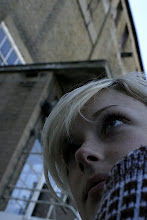PERCEPTION
By this I mean how we present our identity to others, for example through subconscious actions, and how we perceive ourselves.
Putting personal meaning into an object is not something that a designer can often do, it is something happens naturally, is independent process and can’t be created by a design. I developed my ideas with this in mind.
I want to see what happens if you try to change someone's self perception. Would this count as altering their identity? Since drawing week I have been interested in the concept of heroism. I have a friend who has been feeling a bit down recently, and I thought that if she could see herself more as a hero then it would help her feel better. I have contacted as many people as I can that know her, and asked them to tell me the nicest thing she has ever done for them. I plan to make this into a book, and give it to her as a present and document her reaction. The product, and most valuable part of this experiment will not be the book, but her reaction, and the book's effect (if any) on her personality.
In a sense I am trying to put meaning into an object, which is only possible because I know her. I would like to carry on the idea of individual heroism, it would be interesting to develop the idea so it would work for people who I have no connection with.
POSSESSIONS
“The inner space of the 21st century is more likely to be found within the walls of their own cave than in some hidden corner of the soul”
- Roberto Feo, Rosario Hurtado, Diego San Martin: Nowhere/Now/Here
Objects, and the environment a person creates for themselves forms their identity, and ultimately 'brands' them. If I could find a way to swap or change people’s treasured possessions, I could go some way to swapping or changing a person’s identity.
 I overheard a conversation about someone the person knew who had a big family, and wanted them to think that they were all the most important to her. Whenever they all came round she would swap the photos on the mantelpiece, bringing the photos of whoever was visiting at that time to the front.
I overheard a conversation about someone the person knew who had a big family, and wanted them to think that they were all the most important to her. Whenever they all came round she would swap the photos on the mantelpiece, bringing the photos of whoever was visiting at that time to the front.Today people often have two or more ‘sets’ of families, due to divorce and remarriage. Double sided photo frames spin round and display the photo on the other side, making it easier to ‘swap’ from family to family.
This idea developed into a mantelpiece for a semi detached house, where the fireplace and chimney are often shared, and are places where lots of ornaments and photos are displayed. A conveyor belt would swap the two neighbours possessions, ornaments and photos that are displayed above the fireplace.
I would like to find ways of changing the whole of a person’s surroundings, their environment, and perceived environment to investigate this further. Would changing whole environments facilitate identity swapping better? How effective is a person's environment, away from the home in facilitating identity transplants?
I had an idea for an apartment block, where the locks would randomly swap, so when the person came home their key would only access the person living next door’s flat, and they would have to live as that person, wear their clothes and eat their food, until the locks swapped again, and they would move onto the next flat, and so on. This idea presents obvious testing problems, but is an interesting research area.
I plan to look further into how the processes and usages surrounding personal possessions can be manipulated to encourage or facilitate identity swapping.
LEGAL IDENTITY
In today’s world anything can be bought and sold, as long as someone owns it in the first place. If I can legally own my identity, then I could swap it, give it away, or sell it, and in the eyes of the law transplant, swap, or get rid of my own identity.
I could legally cover most aspects of my identity. I could protect the things I create with a copyright, I can register my name as a trademark, I can protect how I look with design protection, and I could patent how I work and what I do, as long as my 'invention' fits the required specifications.
“Patent law requires that any invention must be novel (never have been made public before), inventive (not obvious to someone with a good knowledge of the subject), useful (could be turned into an industrial product, for example) and not excluded (discoveries, theories and works of art are amongst those excluded).”
- www.ipo.gov.uk
 This project would not be about what identity is worth, it would be a way to swap or transplant identity using a system in which anything can be bought. I want to see if it is possible to patent myself. Patenting identity in Britain has only been tested once that I know of, by the poet Donna Maclean in 2000.
This project would not be about what identity is worth, it would be a way to swap or transplant identity using a system in which anything can be bought. I want to see if it is possible to patent myself. Patenting identity in Britain has only been tested once that I know of, by the poet Donna Maclean in 2000.

No comments:
Post a Comment